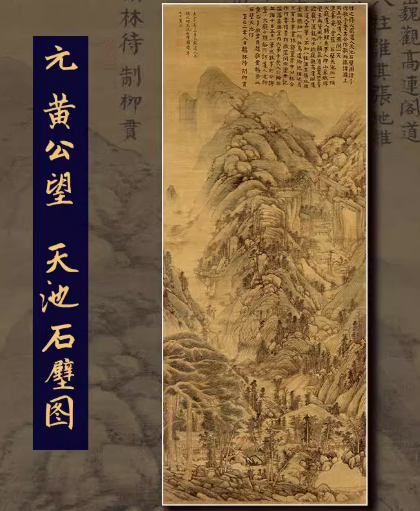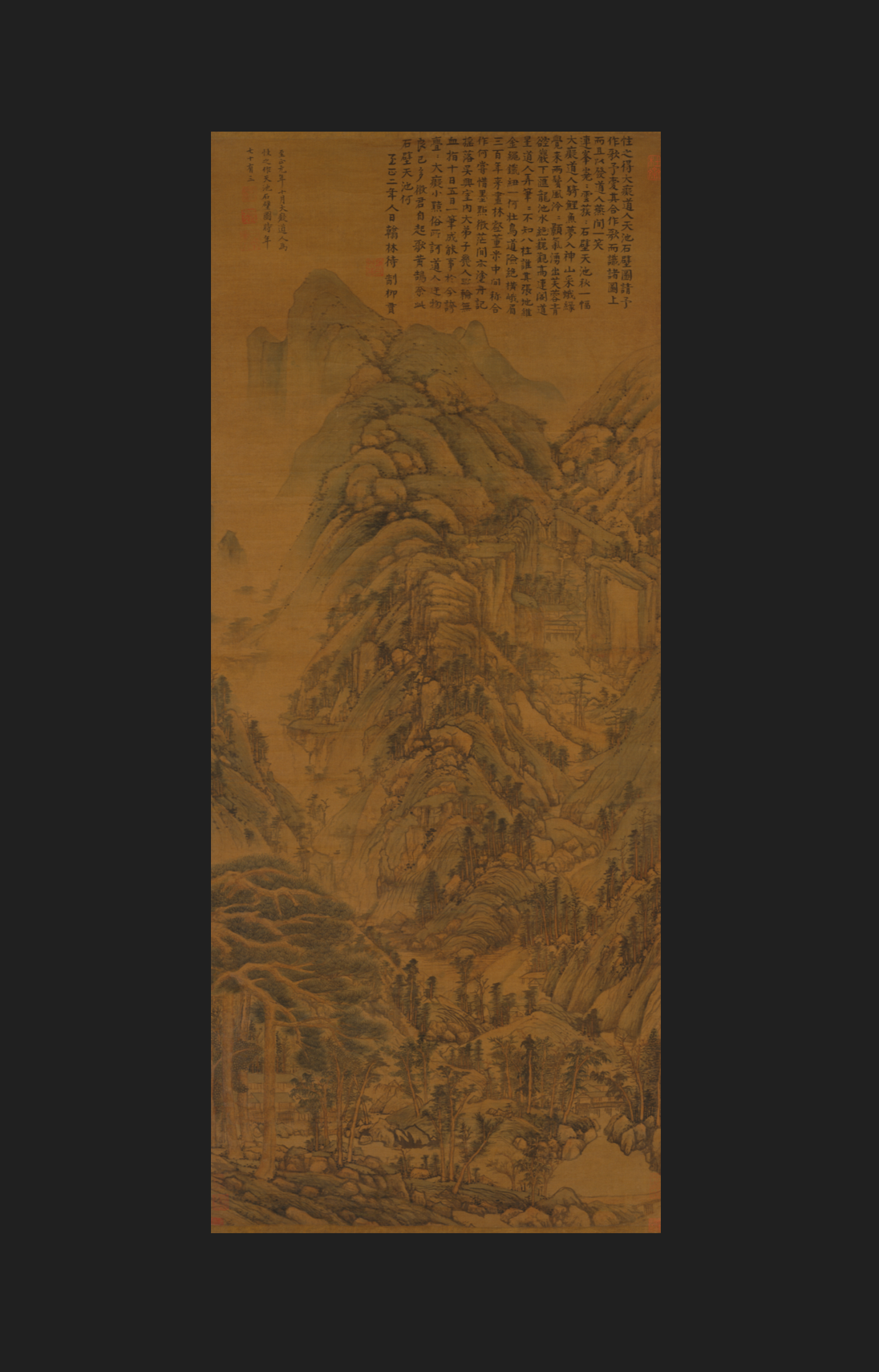天池石壁图
Heavenly Pool and Stone Cliff
Heavenly Pool and Stone Cliff
Couldn't load pickup availability
Share
Huang Gongwang's "Tianchi Shibi Tu" (Heavenly Pool and Stone Cliff Painting) - A Reproduction of a Yuan Dynasty Masterpiece
This painting depicts the scenic beauty of Tianchi Mountain, located in Wuxian County, west of Suzhou City. Tianchi Mountain is connected to Lingyan Mountain and Tianping Mountain, with towering boulders at its peak that resemble a lotus flower when viewed from afar, earning it the nickname "Huashan" (Flower Mountain). On one side of the mountain, a pool of emerald water has accumulated in a semi-mountain hollow for many years, known as the "Heavenly Pool," which gives this side of the mountain its name, "Tianchi Mountain."
The composition combines both high and deep perspectives. The foreground features rolling hills, streams, and lush pine trees. A winding mountain path leads to the main peak. In the center of the painting, layers of ridges and peaks are depicted, with the Heavenly Pool positioned in the upper right. Two stone cliffs stand opposite each other, and a few pavilions are seen on the water in the pool. Flowing clouds and mist surround the main peak, creating a balance between solid and void in the painting.
The composition is intricate, with steep slopes and cliffs distributed in a varied and dynamic manner. Although the painter's brushwork for depicting objects is relatively simple—using horizontal dots for miscellaneous trees and hemp-fiber texture strokes for rocks—the lines appear natural, fluid, and well-ordered. The brushwork is robust, aged, and richly textured, with a wide range of variations. The coloring employs the "light crimson method," primarily using pale ochre complemented by ink-blue and ink-green washes. This combination of warm and cool tones excellently captures the lush greenery of the mountain and the warmth of sunlight. As Wu Xiu of the Qing Dynasty remarked, "The faint ochre hues bring spring to the painting, while the ink-blue and ink-green washes infuse it with vitality."
Huang Gongwang's mastery of the "light crimson method" holds significant importance in the development of ancient Chinese landscape painting, and this painting is a quintessential example of his work. This reproduction faithfully captures the essence of the original, making it a treasured piece for collectors and admirers of classical Chinese art. It offers a glimpse into the poetic and introspective style of Yuan Dynasty painting, perfect for those who appreciate the harmony of nature and the artistry of ink wash techniques. A stunning addition to any art collection, this piece brings the elegance and depth of ancient Chinese landscapes into modern spaces.
黄公望天池石壁图元代国画真迹复制
此图描绘的是苏州城西吴县境内天池山的景色。天池山与灵岩山、天平山一脉相连,峰巅矗立巨石,远望巧若莲花,人称“华山”。山一侧的半山坳中长年积有一泓碧水,名曰“天池”,故山之这一面亦被称为“天池山”。
画面兼用高远和深远的构图方法。近景丘陵溪涧,长松茂树。山径迂曲,通向主峰。画面正中层峦叠嶂,天池居于右上,两侧石壁对峙,池中水阁数椽。主峰两侧烟云流润,使画面虚实相生。
此幅构图繁复,高坡陡崖错落分布,雄秀多姿。画家状物之笔虽较简略,杂树多用横点,山石作披麻皴,但线条却显得自然流畅,起落有序;笔法朴厚苍润,变化多端。设色采用“浅绛法”,多用淡赭,并以墨青、墨绿合染,冷暖互补,极佳地表现出山色的青葱与阳光的和煦。正如清吴修所云:“赭色微黄画里春,墨青墨绿染精神。”
黄公望擅长的“浅绛法”在中国古代山水画的发展中具有重要地位,此图即其典范作品。




